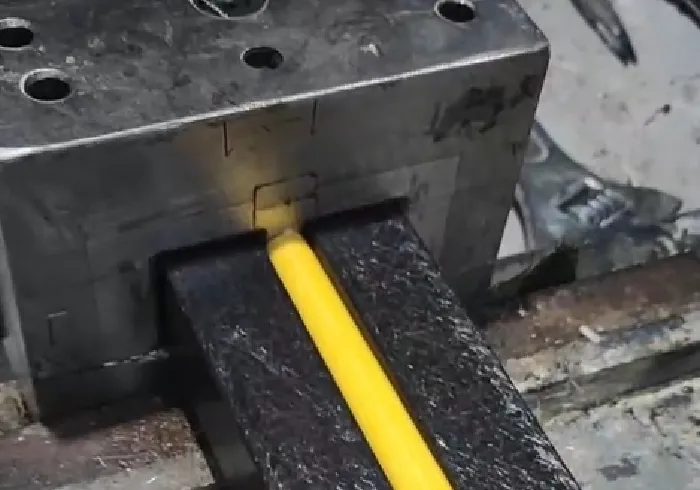loading...
- No. 9, Xingyuan South Street, Dongwaihuan Road, Zaoqiang County, Hengshui, Hebei, China
- admin@zjcomposites.com
- +86 15097380338
- Welcome to visit our website!
cutting frp grating
The Importance of Cutting FRP Grating for Industrial Applications
Fiber Reinforced Polymer (FRP) grating has gained significant traction in various industrial applications due to its excellent durability, light weight, and corrosion resistance. These attributes make FRP grating an ideal choice for environments where traditional materials like steel or wood would suffer from deterioration, especially when exposed to chemicals or harsh weather conditions. However, to maximize the benefits of FRP grating, understanding the cutting process is crucial.
Understanding FRP Grating
FRP grating is manufactured from a composite material that consists of a polymer resin reinforced with fiberglass. This results in a product that is not only sturdy but also lightweight. The grating comes in various types, including molded, pultruded, and custom designs, catering to various industries such as chemical processing, wastewater treatment, and infrastructure maintenance. The varied applications often require the grating to be cut according to specific dimensions to fit into designated spaces seamlessly.
The Cutting Process
Cutting FRP grating requires specialized techniques to ensure that the structural integrity is maintained while achieving the desired dimensions. Unlike traditional materials, cutting FRP can produce dust and small particles that may be harmful if inhaled. Therefore, suitable protective equipment, including masks and goggles, is essential.
cutting frp grating

1. Tools Required - Circular Saw A circular saw fitted with a diamond or carbide-tipped blade is commonly used. The saw should operate at a moderate speed to prevent overheating, which can lead to resin melting or warping. - Jigsaw For more intricate cuts, a jigsaw equipped with a fine-toothed blade can be effective. - Angle Grinder This tool can be beneficial for edge finishing after initial cuts have been made.
2. Cutting Techniques - Marking the Grating Before cutting, it’s essential to accurately measure and mark the grating. Use a straightedge and marker to ensure precision. - Clamping Secure the grating on a stable surface to prevent any movement during cutting, which can result in uneven edges. - Cutting Initiate the cut slowly and steadily. Allow the machinery to perform the work without forcing the blade, as this can lead to chipping and cracking. - Finishing Edges After cutting, it is crucial to smooth the edges using a sanding tool or grinder to eliminate sharp edges that could pose safety risks.
Safety Considerations
Safety should always be a priority when cutting FRP grating. As previously mentioned, protective gear is essential to avoid inhalation of fiberglass dust. Moreover, it is advisable to work in a well-ventilated area to disperse any harmful particles effectively. Additionally, understanding the material’s properties will help in selection of the correct equipment and cutting techniques, preventing accidents and damage to the grating.
Conclusion
Cutting FRP grating is an essential operation in numerous industrial sectors that demand tailored solutions for their specific applications. Mastering the cutting process ensures that the integrity and utility of the grating are preserved, leading to enhanced performance and safety in the workplace. By investing in the right tools, techniques, and safety measures, industries can leverage the advantages of FRP grating effectively. As this composite material continues to evolve, its applications are likely to broaden, making expertise in handling and cutting FRP more important than ever. Whether in a manufacturing plant, a construction site, or a wastewater treatment facility, the ability to correctly cut FRP grating remains a valuable skill that enhances efficiency and safety across various operational landscapes.
-
The Rise of FRP Profiles: Strong, Lightweight, and Built to LastNewsJul.14,2025
-
SMC Panel Tanks: A Modern Water Storage Solution for All EnvironmentsNewsJul.14,2025
-
GRP Grating: A Modern Solution for Safe and Durable Access SystemsNewsJul.14,2025
-
Galvanized Steel Water Tanks: Durable, Reliable, and Ready for UseNewsJul.14,2025
-
FRP Mini Mesh Grating: The Safer, Smarter Flooring SolutionNewsJul.14,2025
-
Exploring FRP Vessels: Durable Solutions for Modern Fluid HandlingNewsJul.14,2025
-
GRP Structures: The Future of Lightweight, High-Performance EngineeringNewsJun.20,2025
